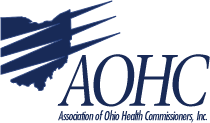Complete Story
06/15/2016
LPHSC Offers Internet Discount Program to AOHC Members!
Lphsc It Initiative 2016 Letter of Agency - IT initiative Fcc Form 460 LPHSC W9
PROGRAM OVERVIEW
The Rural Health Care Program offers reduced rates for telecommunications services and Internet access to eligible healthcare providers. The program has been updated several times by the FCC to encourage greater participation by hospitals and clinics in rural areas. Currently administered by the Universal Service Administrative Company (USAC),the program requires rural healthcare providers to submit an annual application to receive funding and is capped at $400 million per year.
HEALTHCARE CONNECT FUND
Created in December 2012 by the FCC, the Healthcare Connect Fund (HCF) supports wider access to broadband connectivity and broadband networks for rural healthcare providers. All eligible healthcare providers (HCPs) receive a 65% discount on broadband services, equipment, connections to research and education networks, and HCP construction and owned facilities, provided they are shown to be the most cost-effective solution.
TELECOMMUNICATIONS FUND
The Telecommunications Fund, provides discounts for telecom and Internet access services. In this fund, reimbursement is designed to cover the cost difference between services in an FCC designated rural area versus an urban center. Reimbursement is calculated on a rate comparison or on a per mile cost.
Healthcare Connect Fund – the Consortium Approach
A consortium is two or more health care providers (HCPs) that choose to request support as a single entity. Non-rural eligible HCPs may receive support as part of a consortium consisting of a majority rural HCP sites. In addition, ineligible HCP sites also may participate in a consortium and take advantage of lower contract prices often associated with consortia bulk-buying. The Local Public Health Services Collaborative is organized to serve as this legal entity for Local Health Districts in Ohio.
Application Process
After organizing the consortium, the application process involves determining the eligibility of the consortium and each HCP member requesting services (competitive bidding), submitting funding requests, coordinating with the service provider(s) to submit invoice(s), and submitting annual reports. Members of the applying consortium and the requested services must both be eligible for support. There are two initial criteria a consortium member must meet to be considered eligible:
- The health care provider (HCP) must be a public or nonprofit entity, and
- The HCP must be one of the several types of entities, which explicitly includes local health departments.
In addition, broadband connections associated with off-site data centers and off-site administrative offices that are used by eligible HCPs for their health care purposes are eligible for funding.
Rurality
Both rural and non-rural entities may receive funding in the Healthcare Connect Fund (HCF) Program as members of a consortium, provided that the consortium is comprised of a majority rural (more than 50 percent) sites within three years of the filing date of its first request for funding (FCC Form 462). Find out if an HCP is located in a rural area by using the Rural Health Care (RHC) Program's Eligible Rural Areas Search Tool.
Two important benefits of joining this program through LPHSC:
- Non-rural eligible LHDs may receive support as part of a consortium consisting of a majority rural LHD sites. In addition, ineligible LHD sites also may participate in a consortium and take advantage of lower contract prices often associated with consortia bulk-buying.
- If a LHD (that qualifies individually for the program) uses a consultant (third party administrator) to assist in their participation in the Rural Health Care Program, the cost to the LHD has been estimated at 23% of their savings.
By comparison, the following price structure is proposed for participation through LPHSC:
- $150 yearly Collaborative participation fee, if LHD is not already a member of LPHSC
- For LHD that individually qualifies as a rural location: 10% of annual savings
- For LHD that individually DOES NOT qualify as rural: 15% of annual savings
Forms to be Completed – if LHD is interested in participating in the LPHSC application for funding (see links at the top of this page in red):
Letter of Agency
The letter of agency (LOA) provides written authorization to the project coordinator of a consortium to act on behalf of each participating health care provider (HCP) or health system not owned or operated by the consortium or organization operating the consortium. The LOA should be addressed to the project coordinator for the consortium leader.
FCC Form 460
An FCC Form 460 (Eligibility and Registration Form) must be submitted for each member of a consortium, even if that member has been deemed eligible to participate in another component of the Telecommunications Program or Pilot Program. .
The FCC Form 460 may be submitted at any time during the funding year, and only needs to be filed once to establish an HCP's eligibility. If any HCP information filed on the FCC Form 460 changes, such as the site's physical location, statistical information, or eligible entity type, a new FCC Form 460 must be filed within 30 days.


